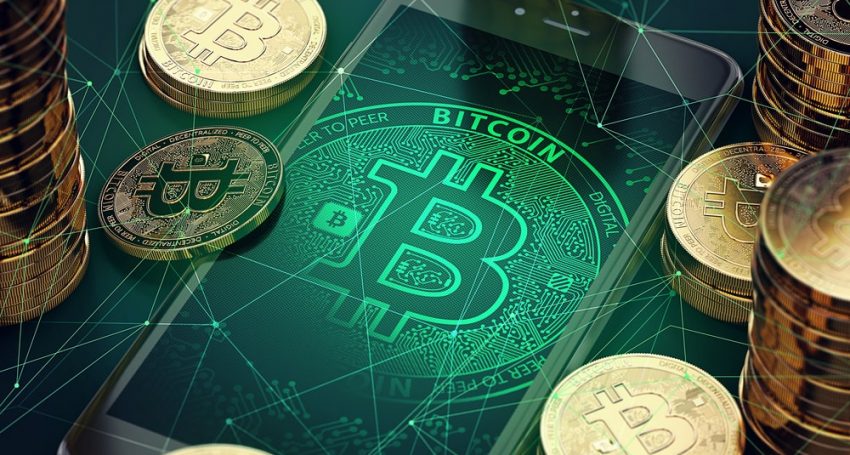How Bitcoin Evolved from the Post-Crisis FinTech Innovation. The trillions of dollars of wealth wiped from the global financial system, due to the Great Financial Crisis (GFC), triggered by a cascading failure linked together by systemic risk, caused by derivatives, reached US$22 trillion, according to a report by the U.S. government accountability office.
In the last ten years since the GFC, a multitude of alternative asset classes emerged across the globe, with digital assets representing the newest breed, with unique genetic characteristics and traits not seen in prior generations of technology.
Bitcoin is an example of the largest cryptocurrency to date, in terms of market capitalisation and network size, and below are some of the drivers that helped propel this newly maturing cryptocurrency and the broader crypto-industry emerging since then.
Low Rates Shifted Interest into FinTech-Powered Alternatives in Finance
The low-interest rate environment that persisted, as a result of the GFC globally, has caused many institutional investors to seek higher yields in alternative markets.
This influx of [smart money] capital into alternative investments and alternative asset classes (i.e., non-bank products) helped to fuel the emergence of new financial products, thanks to innovative financial technology (FinTech).
The Era of P2P Crowd-Funding and Social Networks
As investors sought higher yields in alternative markets, FinTech companies applied innovative experimentation, with new financial products across industries, in order to capture existing and expected demand for alternative financial products.
Venture Capital (VC) and private equity (PE) investments in FinTech companies have helped accelerate these trends across various industries, as global markets for alternative finance continued to mature. The emergence of peer-to-peer (P2P) technology has coincided with trends in payments apps and social networks, as well as social trading and crowd-funding.
The Emergence of a New Crypto Taxonomy of Financial Products: Digital Assets
During the midst of the GFC, in 2008, a document was published titled: ‘Bitcoin: A Peer-to-Peer Electronic Cash System’, authored under the pseudonym ‘Satoshi Nakamoto’.
This white paper for Bitcoin described the use of cryptographic proof, to replace the need for any trust between peers in a network, by using cryptography as a validation mechanism, thus relinquishing the need for any trusted third party or central authority.
Bitcoin
Bitcoin is a digital currency that runs on a distributed peer-2-peer (P2P) decentralized network on the global internet, supported by its community of users. Users transact Bitcoin between two unique public addresses, one belonging to the sender and the other to the receiver, and a small transaction fee is paid by the sender to ‘miners’ within the network who help process the transaction (more on that below).
Being decentralized and public helps Bitcoin to maintain its distributed network, consisting of copies of its ledger, hosted by users in what is called a node. The current size of the Bitcoin ledger (Bitcoin) is currently nearly 145 gigabytes and growing each day, and this represents the amount of hard drive storage needed for anyone to run a full node.
Bitcoin Nodes
Hosting a full node, which can be done by nearly anyone, helps to support and run the Bitcoin network. By running a full or partial node, users contribute to the collective network of nodes, which act as a checkpoint for the entire ecosystem, as each node contains the entire ledger with an immutable history of transactions that have already been deemed irreversible (more on how transactions are processed and mined below).
Bitcoin Mining
The potential supply of Bitcoin is limited, due to the code used in the protocol that Bitcoin must follow, without exception (not including forks! More on that later). There can never be more than 21 million Bitcoins created, and there are already nearly 17 million in existence.
Bitcoins are created based on a multi-step process, where user-operated/owned computers are dedicated to trying to guess a nonce, which is a sufficiently large arbitrary number that is generated randomly and with increasing difficulty to find. The increasing mining difficulty, together with a limited potential supply, creates a narrow channel to keep inflation contained, compared to traditional fiat currencies, such as U.S. Dollars or Euros (where inflation rates are attempted to be controlled by a central bank).
Mining Difficulty
The difficulty rate to be the first to find the next nonce – to be rewarded the Bitcoin produced in the next block – is so high currently that entire factories of interconnected servers, running specialised computer processing (mining) hardware, are dedicated to achieving the required hashing rates to make mining worthwhile.
Network Incentives: Mining and Network Fees
Each time a nonce is correctly guessed, a new block is created and the correct nonce number becomes hashed or connected to the prior block, acting as a linear chain between the prior and current block.
Miner Rewards
The miner or pool of miners that guessed the correct nonce is/are awarded the Bitcoin amount contained in the newly minted block, which is currently 12.5 Bitcoin per block. Users who participated in mining the block also compete to add recent Bitcoin transactions, made between users transacting Bitcoin in the network, into the newly mined block to verify them.
Miner Fees
Senders of Bitcoin pay a network fee to miners and miners are incentivised to include these transactions in new blocks in order to earn the network fee paid by the sender of each Bitcoin transaction.
This structure supports the flow of capital within the Bitcoin network, while keeping miners’ interest vested in supporting the ongoing maintenance of the network, which, in turn, supports more users within the network, which, then again, returns value to miners in the form of transaction fees.
Bitcoin Cyclical Price Growth
The cyclical process that Bitcoin’s network structure follows is similar to economic cycles. Bitcoin can be thought of as an economy and was literally in the top 40 globally when comparing its M1 money supply, as of November 2nd, 2017, when its market cap surpassed US$110 billion, after the price of 1 Bitcoin reached US$7,200.
Many consider Bitcoin to be in a price bubble, yet when examined over its historical price action, Bitcoin has already had numerous bubbles, where its price inflated and deflated over the last nearly nine years.
Passive Investing in Cryptocurrencies
Despite rebounding higher in its last wave (current bubble), if the underlying drivers that are causing it to become accepted continue, some analysts believe it could reach US$1million per Bitcoin in just a few years, while others believe it will fail or be superseded by next-generation crypto-networks with more advanced survival traits.
These challenges make it very difficult for even the most passive investors, as maintaining a diversified portfolio in cryptocurrency markets may require very active rebalancing, as the rankings of digital assets are constantly changing (when comparing the top 50 cryptocurrencies, for example, over just the last few months).
In the next issue of our magazine, we will talk about what social cryptosystems are, what the public nature of Bitcoin is and how digital assets are protected.



